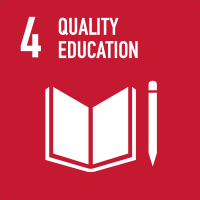Studying at the University of Verona
Here you can find information on the organisational aspects of the Programme, lecture timetables, learning activities and useful contact details for your time at the University, from enrolment to graduation.
Study Plan
This information is intended exclusively for students already enrolled in this course.If you are a new student interested in enrolling, you can find information about the course of study on the course page:
Laurea in Scienze psicologiche per la formazione - Enrollment from 2025/2026The Study Plan includes all modules, teaching and learning activities that each student will need to undertake during their time at the University.
Please select your Study Plan based on your enrollment year.
1° Year
| Modules | Credits | TAF | SSD |
|---|
2° Year It will be activated in the A.Y. 2025/2026
| Modules | Credits | TAF | SSD |
|---|
1 module between the following1 module between the following3° Year It will be activated in the A.Y. 2026/2027
| Modules | Credits | TAF | SSD |
|---|
1 module between the following1 module among the following| Modules | Credits | TAF | SSD |
|---|
| Modules | Credits | TAF | SSD |
|---|
1 module between the following1 module between the following| Modules | Credits | TAF | SSD |
|---|
1 module between the following1 module among the following| Modules | Credits | TAF | SSD |
|---|
Legend | Type of training activity (TTA)
TAF (Type of Educational Activity) All courses and activities are classified into different types of educational activities, indicated by a letter.
Computer Science and Multimedia (2024/2025)
Teaching code
4S02405
Teacher
Coordinator
Credits
6
Language
Italian
Scientific Disciplinary Sector (SSD)
INF/01 - INFORMATICS
Period
Sem. 2B dal Apr 7, 2025 al May 24, 2025.
Courses Single
Authorized
Learning objectives
General aims : Knowing and understanding methods of research and measurement of psychological phenomena related to the individual, interpersonal relationship and groups Specific learning objectives: define the fundamental concepts of computer science describe the functionality of the Office Automation describe the applications of computer science in the knowledge society illustrate the fundamental concepts and tools of multimedia illustrate multimedia applications in communication and entertainment define the principles of Multimedia Learning by Mayer describe the characteristics of online teaching and mobile learning describe the different formats and characteristics of digital andmultimedia contents illustrate the functions of a Learning Management System (LMS) designe and implement a LO, Learning Object linked to the gamefication.
Prerequisites and basic notions
No prior knowledge is required.
Program
The course program is divided into three parts:
(1) PART ONE: IT and multimedia
- Main concepts: hardware, software, algorithms, usability and accessibility
- Internet, Web, Social Networks, Cybercrime and IT security
- Multimedia technologies and digital formats
(2) PART TWO: Information technologies and teaching
- General principles of Instructional Design and Multimedia Learning
- Digital Learning, LMS platforms and technologies for dual teaching
- New technologies to support human resource management processes
(3) PART THIRD: The new digital intelligence
- Human Intelligence, AI and Hybrid Intelligence
- The process of transforming digital data into information
- Acquisition, Memory, Computation, Representation, Activation and Adaptation
Bibliography
Didactic methods
The lessons are divided into moments of frontal teaching and analysis of application cases through the support of multimedia tools (slides, videos, audio fragments, graphics, infographics, animations, applications in demo mode). There are also some testimonies and guided exercises for the deepening of good practices in the management of Web and Social Network tools for training and teaching purposes. The course teaching material is available and can be consulted asynchronously in the online environment dedicated to teaching on the University Moodle platform.
Learning assessment procedures
The exam (for both attending and non-attending students) is divided into three steps:
STEP 1: A questionnaire to verify knowledge relating to parts 1 and 2 of the program. This test is mandatory and consists of 60 questions of various types. Test duration: 60 minutes.
STEP 2: A questionnaire to verify knowledge relating to part 3 of the program. This test is mandatory and involves answering open-ended questions. Test duration: 60 minutes. Access to this test is contingent upon passing Step 1.
STEP 3 (optional):
3.A. Oral interview to verify the knowledge related to one of the books indicated by the teacher. Access to the test is subject to passing the written exam (Step 1) and the oral exam (Step 2).
3.B. 3.B. Optional Artificial Intelligence project work.
During the lessons, students will have the opportunity to take some intermediate tests.
Evaluation criteria
Step 1 - The structure of the questionnaire reflects the logical architecture of the didactic objectives relating to parts 1 and 2 of the program. The various types of questions correspond to the different levels of complexity of the contents (levels 1 and 2 of Bloom's Taxonomy). Maximum score = 15 points. Minimum exceeding threshold = 75%.
Step 2 - The structure of the questionnaire reflects the logical architecture of the didactic objectives relating to part 3 of the program. The open questions correspond to the different levels of complexity of the contents (levels 1 and 2 of Bloom's Taxonomy). Minimum exceeding threshold = 60%.
Step 3
- 3.A. Oral exam (optional). The outline of the oral exam reflects the logical architecture of the didactic objectives of the reference manual. The open questions correspond to the different levels of complexity of the contents (levels 1 and 2 of Bloom's Taxonomy). Maximum score = 3 points. There is no minimum threshold for exceeding.
- 3.B. 3.B. The exam consists of the submission and presentation of an AI Project Work. Maximum score = 3 points. There is no minimum threshold for exceeding.
Criteria for the composition of the final grade
The final grade for the module is calculated on a scale of thirty and is equivalent to the sum of the scores obtained in the mandatory tests and the optional oral exam. Any points exceeding the maximum value (30) will automatically be converted into “laude”. Minimum passing threshold for the exam = 18/30.
Exam language
Italiana


